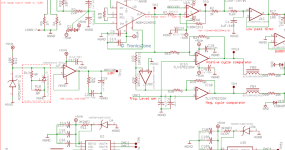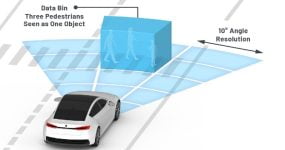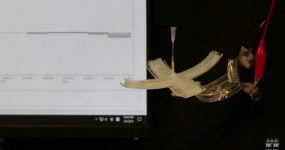
Having set up a full-scale development centre in Pune, which matured from a captive R&D unit for global projects to a strategic growth-driving engineering unit, Hella India Automotive is now charting an aggressive product offensive tapping demand for the latest tech, says Amit Panday.
Hella India Automotive (HIA), the 100 percent subsidiary of the Germany-based 6.4 billion euro Hella KGaA Hueck & Co, aims to be the leader in driving the increasing role of electronics in vehicles. The company not only plans to expand its existing product portfolio but is also looking to significantly boost its R&D capabilities to fuel new innovative and tailor-made solutions for India. In tandem, its Pune-based development centre – known as HIA-ED internally – continues to support Hella’s critical offshore projects and utilise the same as a learning ground for knowledge acquisition and developing competencies in new domains.
Speaking to Autocar Professional, Rajesh Kulkarni, vice-president, sales and marketing, HIA, says, “The need today is to address global and local industry trends by rolling out cost-efficient electronic systems that will contribute to the growing electronic content and digitisation, new customisation and boosting fuel efficiency. New products that are being developed at the Pune-based HIA-ED are perfectly tuned to cater to these requirements.”
Currently, the R&D unit is working on solutions across steering control module (SCM), current sensors, body control modules (BCM), smart mood lighting (SML), DC/DC converter, tyre pressure monitoring system (TPMS) and others.
BOOMING AUTO ELECTRONICS BIZ
Kulkarni agrees that the automotive electronics market in India has growth potential like no other. He believes that although this is partly due to the low penetration in the vehicles currently sold in the country, growth will be primarily driven by the three major requirements –regulatory norms, e-mobility and environment issues, and connectivity.
“While a lot of features demanding electronics are currently picking up demand, these basically are catering to individual customisation and comfort-related requirements. In a few years from now, these features will be required by default due to fast-evolving technologies, which will be heavily used for requirements under e-mobility, connectivity and regulatory norms,” explains Kulkarni.
According to the senior company official, since 2014, HIA’s business from electrical and electronics based products has grown in double digits. “It is estimated that the market for automotive electronic systems in India will grow at a CAGR of 11-14 percent between 2016 to 2022. HIA’s business will be aligned with this market growth during this period. With the government norms on stricter emissions and safety, the demand for automotive electronics will see a spike in the market. In FY2017-18, HIA’s electronics sale is expected to grow significantly above the market growth,” he says.
NEW PRODUCTS

To cater to the new requirements, the company is gearing up on a number of new products. According to Kulkarni, Hella-made fuel efficiency technology sensors such as intelligent battery sensors (IBS), TPMS, and steering sensors can contribute to the emission reduction efforts. “IBS allows precise battery monitoring and intelligent alternator control which ensures engine cranking abilities at all times and this leads to fuel savings and CO2 reduction. TPMS ensures safety by providing alerts with respect to temperature and pressure of the inflated tyres, which helps in reducing fuel consumption,” he explains. Throttle position sensor (TPS), exhaust gas recirculation sensor (EGRS) and oil pressure and temperature sensor are other types of sensors that contribute in the emissions and safety requirements.

While the TPS helps by providing signals to the fuel injection system about power demands made by the engine, the EGRS is used to measure the position of the exhaust gas valve, which regulates the flow of exhaust gas. The company is believed to be keen on bringing these products to India, depending upon the demand and business cases.
Further, Hella’s planned product pipeline for the near future includes position sensors, steering sensors, steering control modules, DC/DC converters, IBS, electronic horns, reverse parking assist systems, engine compartment actuators, fuel control modules, comfort control modules, TPMS and others.
Nevertheless, the products that HIA currently manufactures at its Dhankot plant and supplies include accelerator pedal sensors, body actuators, climate sensors, electro-mechanical horns, BCMs and SMLs.
On the other hand, vacuum pumps, relays and rain and light sensors are understood to be among the imported products that have local supplies. “Products catering to efficiency and electrification (DC/DC converters, IBS, motor controller and battery charger), connectivity and digitisation (BCMs, car access passive entry systems – CAPEs, remote key entry – RKEs and temperature sensors), customisation (SML) and autonomous driving modules (electric steering and steering sensors) are expected to witness growth in their demand as they are directly aligned with the new industry trends,” reveals Kulkarni.
HIA’s Pune-based R&D unit has established end-to-end BCM platform development capabilities. Currently, among all products, the BCMs contribute maximum to HIA’s business and Kulkarni is optimistic that the growth will continue its momentum in the coming years too. “We also foresee that the business from automotive electronics will be highly contributed by new products such as the EPS, SML, BCM on the back of new orders,” he adds.
DEVELOPMENT CENTRE IN PUNE

With manpower of more than 220 skilled employees, most of them as qualified electronic engineers, the Pune-based development centre (HIA-ED) currently sees 70 percent of its work supporting Hella’s critical global programs. According to Rajkumar Baratam, director – program management; design and development – electronics, HIA-ED, the Pune-based R&D unit is the second biggest system test lab within Hella globally. The centre, which has 20 hardware-in-loop (HIL) systems installed to carry out system testing for global and domestic projects, has developed several capabilities including hardware and software development, system test and validation, instrumentation and calibration among others.
Baratam, who heads the development centre in Pune, says, “When Hella India Automotive Electronics Development Centre (HIA-ED) started its operations (in 2008), it was only providing design and development support for global projects. The strategy was to build competence in domains where Indian talent could be utilised for providing support on global projects, which could be further utilised for executing local projects. Over the period, HIA-ED developed expertise and became capable of handling independent development for body electronics (independent designing of BCMs, RKEs) with a business award from Tata Motors. HIA-ED has a major contribution in establishing HIA as an important electronics supplier in India.”
According to Baratam, HIA-ED’s core competencies include complete product capability of complex electronics, complex BCM development in Autosar and Matlab environment, platform development for BCM / CCM, acquisition of local programs for BCM, RKE, DC/DC converters, EPS, SML and their execution, design and development capabilities of power electronics, DC/ DC, battery charger, motor controller and EPS.
“We have also begun advance engineering developments on the front of e-mobility and connectivity verticals. Similar competencies are being developed for energy management products also,” he reveals.

The company has invested about Rs 25 crore in setting up the Pune-based test lab. It plans to invest another Rs 20 crore in capacity development over the next three years. The investments will include adding design and development capabilities and equipment.
Explaining the importance of the test lab, Baratam adds, “The Pune unit is the only centre within Hella globally which handles diagnostics for global locations and end-of-line software testing for ECUs. We have what we call as global feature owners (GFOs) wherein each GFO location is an expert in its respective feature / platform development. Of the 22 GFOs worldwide in Hella, 16 are in India in the Pune-based development centre.”
HIA follows June-May as its accounting year. Its turnover for June 2016-May 2017 is estimated to be about Rs 350 crore, which is a year-on-year growth of 19-20 percent. The company is targeting a turnover of about Rs 750 crore by 2020- 21, riding on the demand for automotive electronic content in the domestic market. Given the demand for auto electronics, it should get there smoothly.
[“Source-autocarpro”]
| M | T | W | T | F | S | S |
|---|---|---|---|---|---|---|
| 1 | 2 | 3 | 4 | 5 | 6 | 7 |
| 8 | 9 | 10 | 11 | 12 | 13 | 14 |
| 15 | 16 | 17 | 18 | 19 | 20 | 21 |
| 22 | 23 | 24 | 25 | 26 | 27 | 28 |
| 29 | 30 | |||||
























